The Davenports
The Davenport Family established Macclesfield in 1840
Davenport Memorabilia
An Interesting Relic
The Davenport Family established Macclesfield in 1840
George Davenport, an influential Oxford banker and a Director of the South Australian Company saw the policy of ‘Special Surveys’ as an opportunity to purchase a large amount of cheap land that could be rented to small farmers and eventually sold at a profit. In October 1839, he and two partners Frederick Luck and Roger Cunliffe, agreed to purchase 4,416 acres under Preliminary Land Order 162. George then sent his eldest son, George Francis Davenport, to South Australia to deal with the matter.
George Francis Davenport had to choose the land for the ‘Special Survey’ with a proviso that 576 acres had to be set aside for a town which would be mapped and marked out at the expense of the South Australian Commissioners. Francis was also responsible for the division of the land into lots for each partner.
In1840, George Francis selected a ‘Special Survey’ of 15,000 acres, setting aside land for the town of Macclesfield. It was named after the Earl of Macclesfield for whom his father George was a steward. He supervised the beginnings of the survey but returned to England in 1841, before it was completed. He left Henry Giles, son of the manager of The South Australian Company to manage his affairs.
In 1843 Francis returned with his wife Sarah, brothers Robert and Samuel and Samuel’s wife Margaret (nee Cleland). George Francis Davenport died in April, 1843 about five weeks after he returned to South Australia. He had what was thought to be typhus. His wife and children returned to England.
Following the death of their brother, Robert and Samuel were responsible for the administration of the 'Special Survey' and subsequent land divisions. Samuel and his wife Margaret lived in Macclesfield until 1850, when they moved to Beaumont. Robert purchased a local property he called Battunga and lived there with his family until his death in 1896.
Sir Samuel Davenport 1818-1906
Samuel became a distinguished South Australian. After a period as a Legislative Councillor (1846–1848), he became a City Commissioner (1849-1852). He was also an Executive Commissioner at London’s Great Exhibition (1851) and at other international exhibitions (1876-1888). Samuel was nominated again for the Council in 1855 and became a member of the first elected Legislative Council in 1857, subsequently serving as a Commissioner of Public Works.
In 1860 as a trustee of the Poonindie Mission, Samuel became a member of a Select Committee on the Aborigines. Between 1864 and 1872 he published several pamphlets on olive, silk and tobacco cultivation. Samuel also became president of the Royal Agricultural and Horticultural Society and later of the Royal Geographical Society of Australasia, South Australian Branch. He was a director of several companies, a trustee of the Savings Bank of South Australia and president of the Chamber of Manufactures.
Samuel was knighted in 1884 and received honorary doctorates from Cambridge University (1886) and elsewhere: [Ref. SLSA Papers of the Davenport Family PRG 40 Series List].
Referring to Samuel’s early life, an article in the Express and Telegraph newspaper dated 3 Feb, 1894 stated ‘It was no unusual thing for Mr. Davenport to get up at 4 o’clock in the morning, ride the 27 miles from Macclesfield to the city, attend the sitting of the Legislative Council and ride home the same night’.
Robert Davenport 1816-1896
Robert was a successful farmer, but also a Justice of the Peace and sat at Courts in the district of Mount Barker. In 1851 he was elected to represent Hindmarsh in the old Legislative Council, being one of the sixteen elected members. During his time in the Council he submitted a motion against State Aid to religion. He resigned in 1854 and did not seek further re-election.
Robert returned to England several times over the years and in 1846 married Dorothea Fulford at St. Pancras Church of England, London. They had eight children, Frances Dorothea (Fanny), twins Mary Fulford and Ernest Devereux, Robert Noel, Amy Louisa (died young), Howard, Samuel Alfred, and Cecil John. In 1865 Dorothea died leaving a young family.
Robert married his second wife, Clementina Sharp Goulty in Brighton, Sussex in 1873. She was the daughter of Rev. John Nelson Goulty of Brighton, Sussex and Clementina Sharp. Robert Davenport was her first and only husband and she had no children of her own. She died on the 22nd Dec 1878 at Battunga (research courtesy of Sharan Melville-Smith).
Robert’s obituary in the South Australian Register of 4 September,1896 stated that ‘he lived nearly all his days at Battunga, as he did not care for a public life, preferring the rest and quiet of a country residence’.
Robert remained a country gentleman and raised a family of 8 - on strict religious lines - at his property “Battunga”.
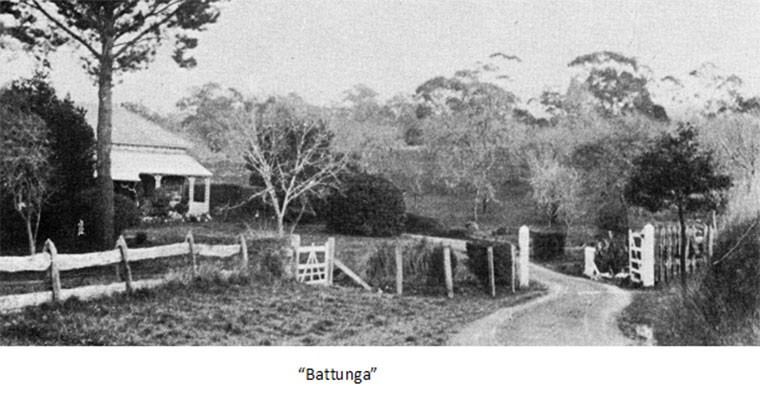
Links to Battunga: Cemetery, Aboriginal meaning the ‘place of large trees’, Watergate area.
A search of this site for Battunga via the Search button at right will bring up much more history concerning the Davenports and Battunga.
For further information about the Davenport Family go to the State Library of SA website at: - https://www.slsa.sa.gov.au/collection
and Sir Samuel Davenport, KCMG _ SA History Hub
and J150 Plaque "(Samuel) Davenport was a liberal-minded and literate parliamentarian and a promoter of industry, especially in the fields of horticulture and viniculture."
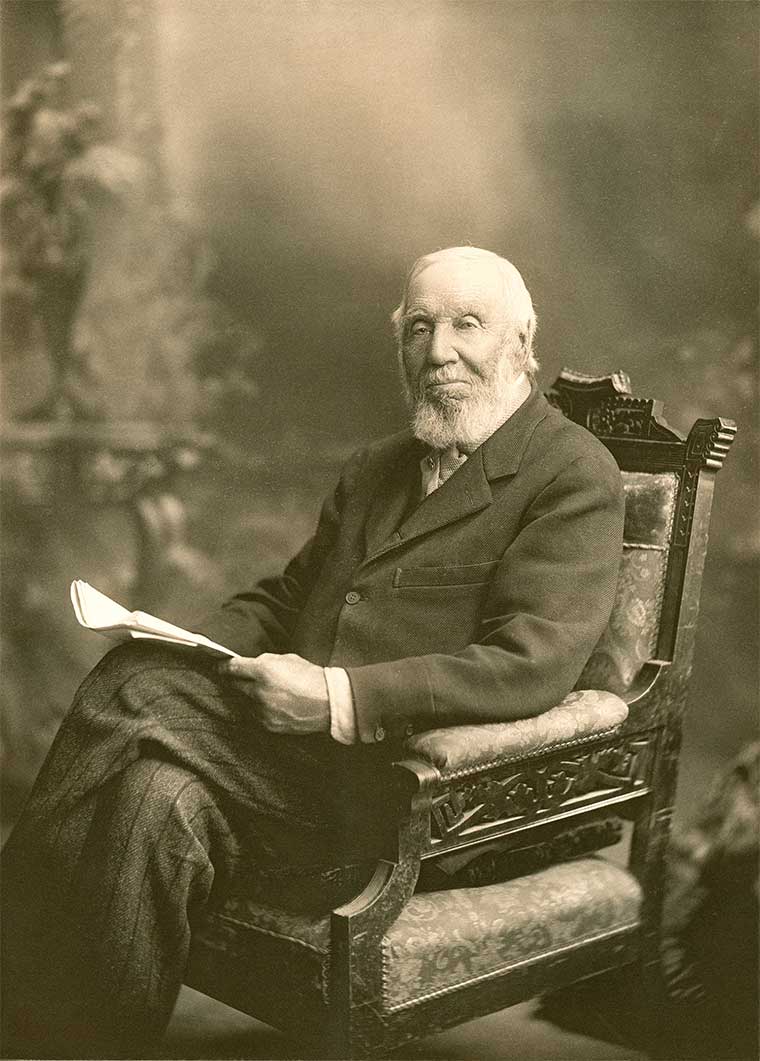
Above: Sir Samuel Davenport 1890c. SLSA collection [B7507]
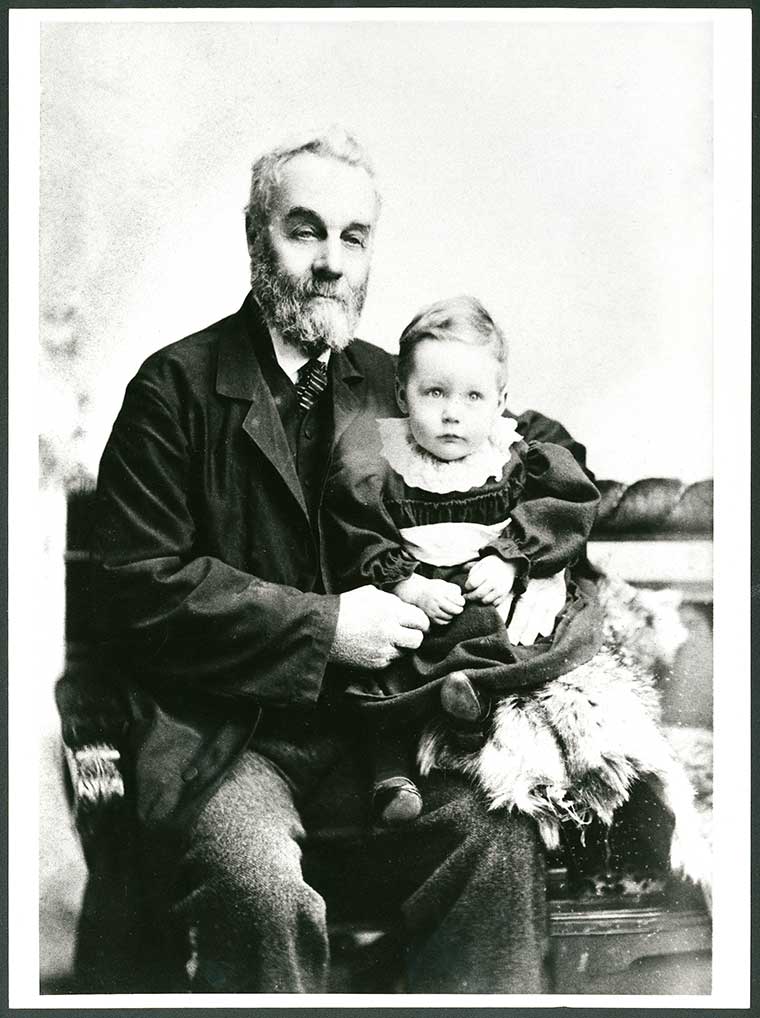
Above: Robert Davenport with his grandson Robert Cecil Davenport 1895c. SLSA collection [B17031]
DAVENPORT Memorabilia
By Ray Risely, from a Maccy Newsletter article.
A couple of our locals were wandering around a cemetery out Payneham way the other day looking for lost relatives when lo and behold they came across the graves of Sir Samuel and Lady Margaret Fraser Davenport. We will all recognise immediately that Samuel was one of the three Davenport brothers who came out to South Australia in the very early days to settle Macclesfield.
Samuel’s father, George, was the instigator of the initial land purchase and survey, and his eldest son, George Francis, was despatched from England, arriving here in February 1840 to supervise the survey, which was initially for a parcel of land near Port Lincoln. George Francis soon changed that to a 15,000 acre parcel in what is now Macclesfield, before returning to England in 1841.
The township of Macclesfield being named after the Earl of Macclesfield for whom George was a steward. When George Francis returned he brought with him his two brothers, Robert and Samuel and Samuel's wife Margaret (nee Cleland) and they settled here in Macclesfield in 1842. Unfortunately George Francis died some 5 weeks after returning to Australia.
Samuel and his wife Margaret were married in England just three months prior to their voyage from England. Margaret’s brother (John Fullerton Cleland) married an Elizabeth Glen and settled in South Australia in 1852, becoming Registrar General of Births, Deaths & Marriages. Elizabeth Glen was the sister of George (1827-1908) and Thomas Glen (1829-1875) who were step-brothers of Samuel’s wife Margaret.
In a letter from Samuel to his father George, Sept. 25th 1843 – the “Madras” is bringing in Mr Evan(s) (Mr Henry Evans 1812-1868 vigneron) and Mr Angas (John Howard Angas – second son of George Fife Angas the agent for his father).
In another letter in 1846, - “I post a letter for Mr Evan to his father at Enstone Oxon. Evans I have made schoolmaster at Macclesfield”. Henry Evans was a son-in law of Mr George Fife Angas.
Some of the original partners in the first survey were Roger Cunliffe and Frederick Luck.
Sir Samuel Davenport was nominated a member of the Legislative Council in 1846.
If you have read this far you will notice quite a tie-up of names familiar to us today as suburbs and streets.
The graves of Samuel Davenport, his wife Margaret and Ellen Evan and Harriet Glen, at Payneham, Adelaide, South Australia. |
|
|---|---|
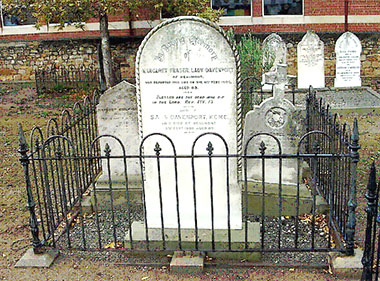 |
Group of graves: -
|
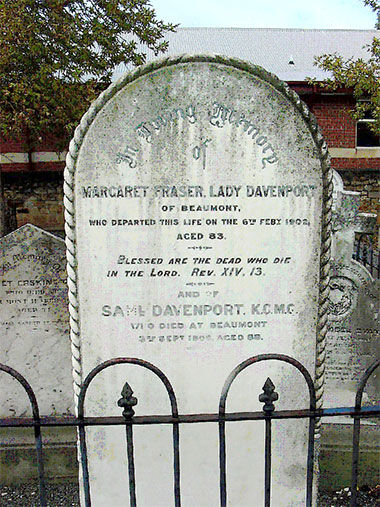 |
Margaret Fraser, Lady Davenport and Samuel Davenport K.C.M.G. |
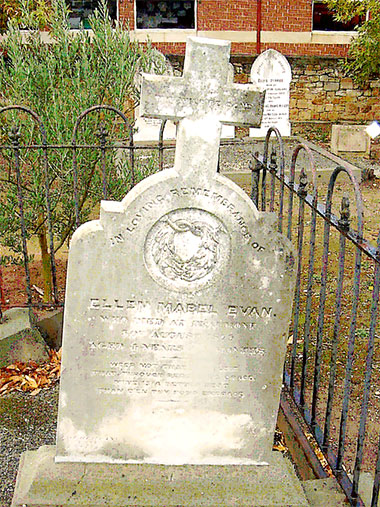 |
Ellen Mabel Evan
|
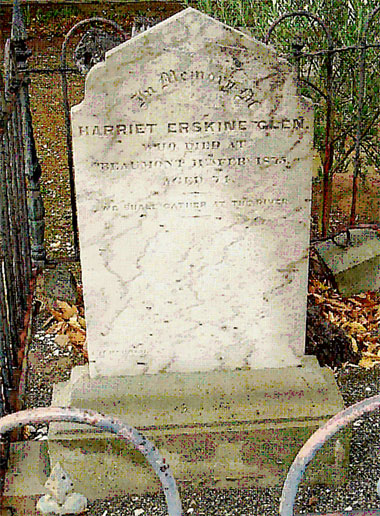 |
Harriet Erskine Glen
|
An Interesting Relic
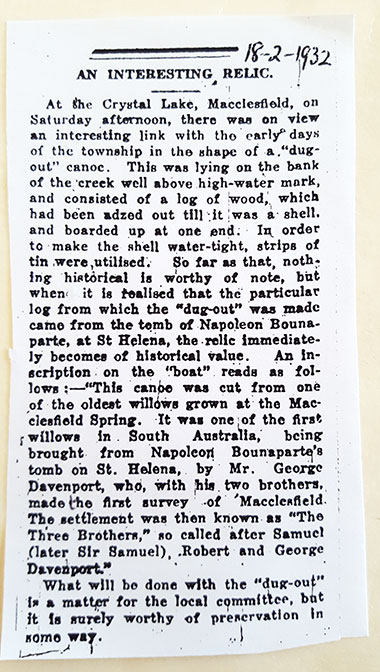 |
An Interesting Relic 18-2-1932 At the Crystal Lake, Macclesfield, on Saturday afternoon, there was on view an interesting link with the early days of the township in the shape of a "dug-out" canoe. This was lying on the bank of the creek well above the high-water mark, and consisted of a log of wood, which had been adzed out till it was a shell, and boarded up at one end. In order to make the shell water-tight, strips of tin were utilised. So far as that, nothing historical is worthy of note, but when it is realised that the particular log from which the "dug-out" was made came from the tomb of Napoleon Bounaparte (sic), at St. Helena, the relic immediately becomes of historical value. An inscription on the "boat" reads as follows:- "This canoe was cut from one of the oldest willows grown at the Macclesfield Spring. It was one of the first willows in South Australia, being brought from Napolean Bounaprte's tomb on St. Helena, by Mr. George Davenport, who with his two brothers made the first survey of Macclesfield. The settlement was then known as "The Three Brothers," so called after Samuel (later Sir Samuel), Robert and George Davenport." What will be done with the "dug-out" is a matter for the local committee, but it is surely worthy of preservation in some way. |



